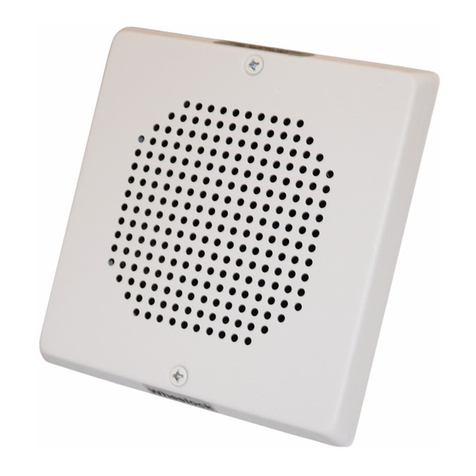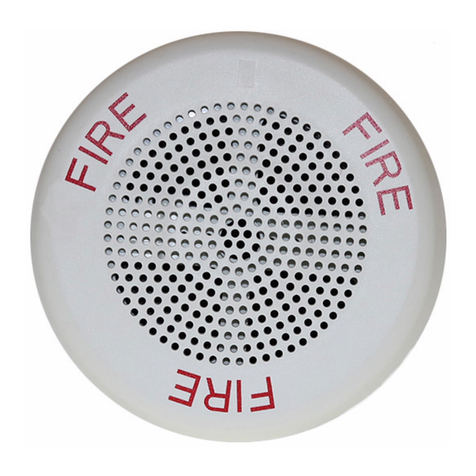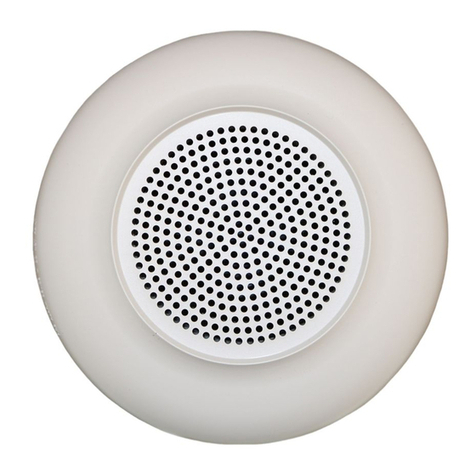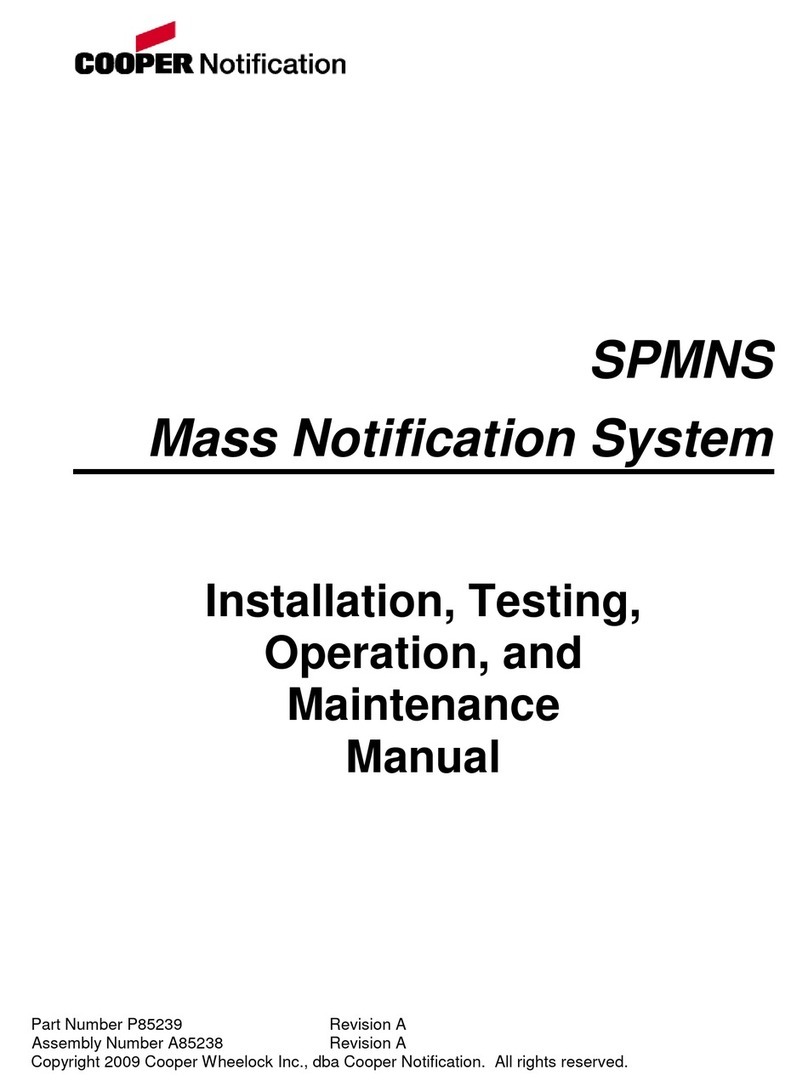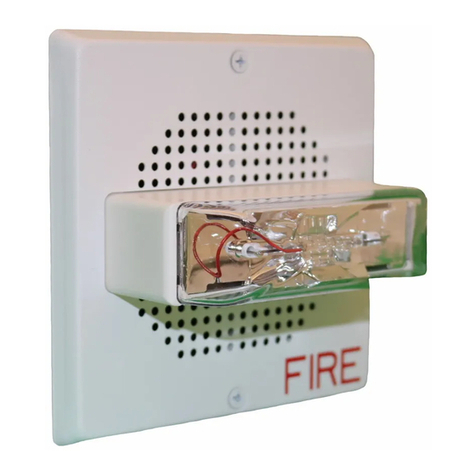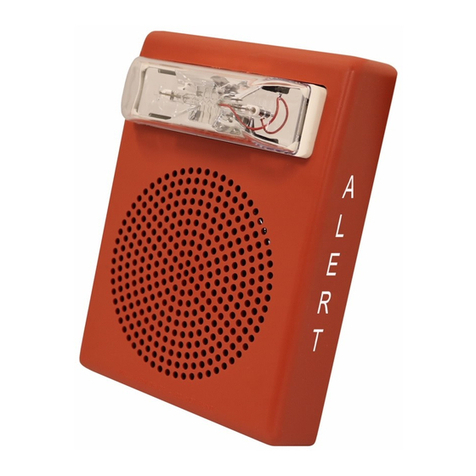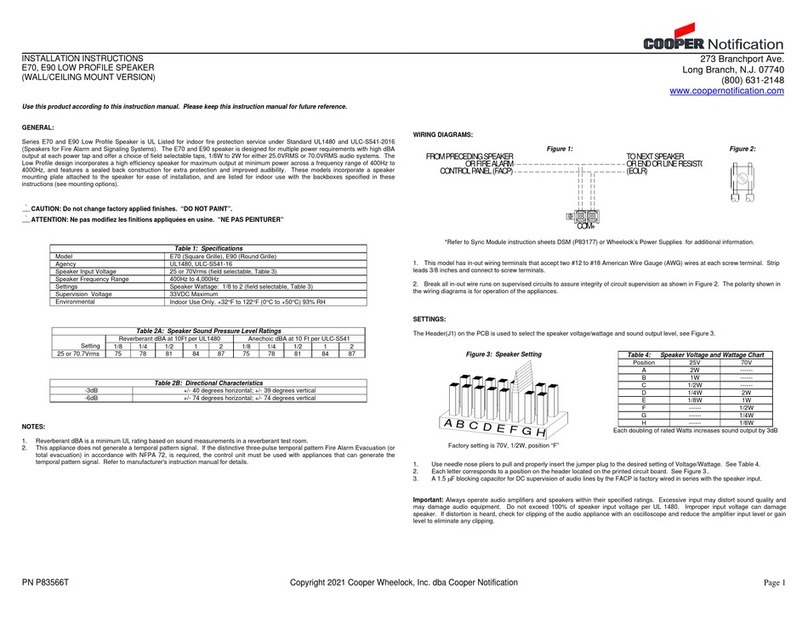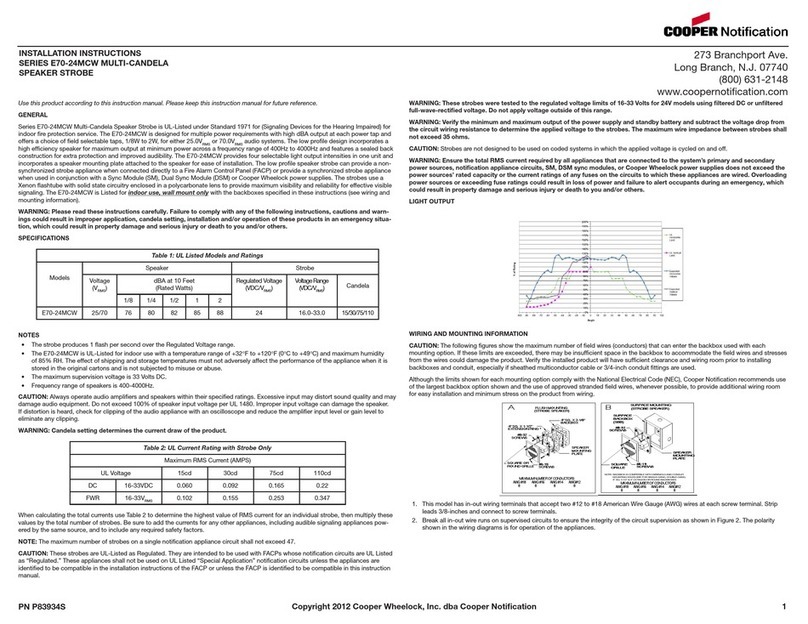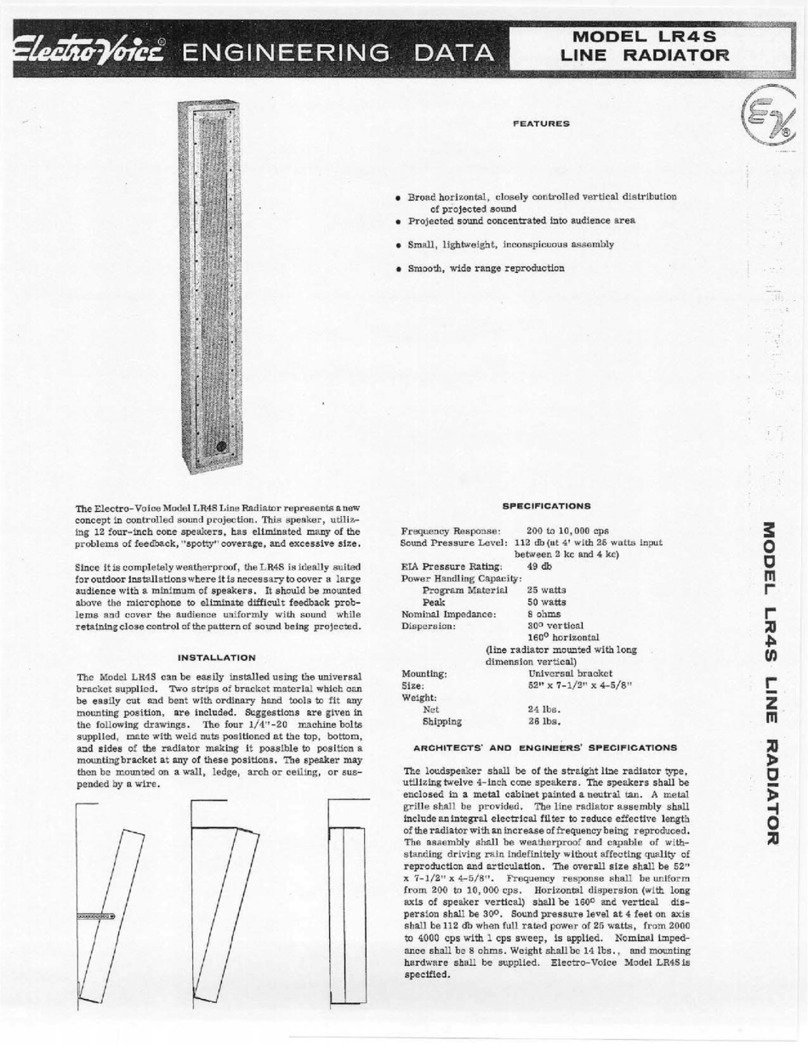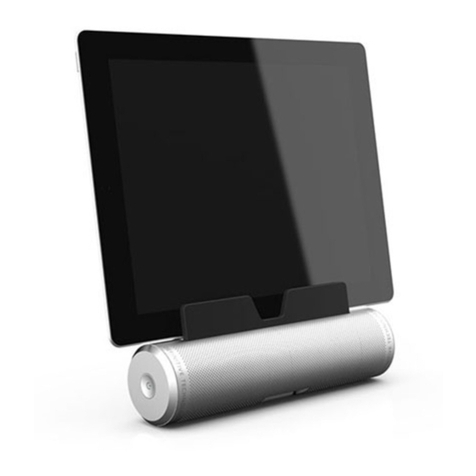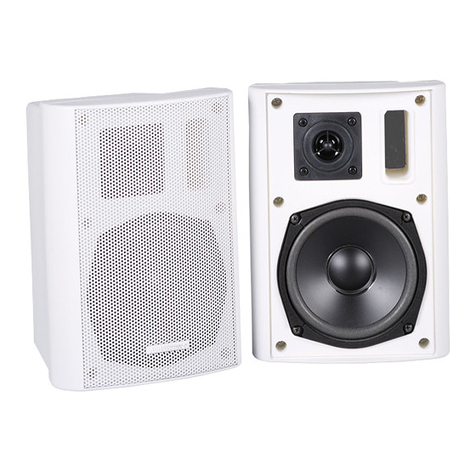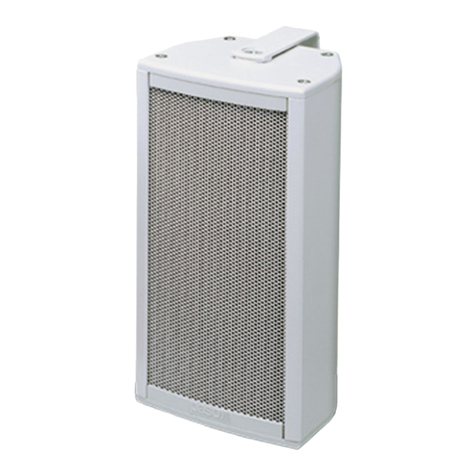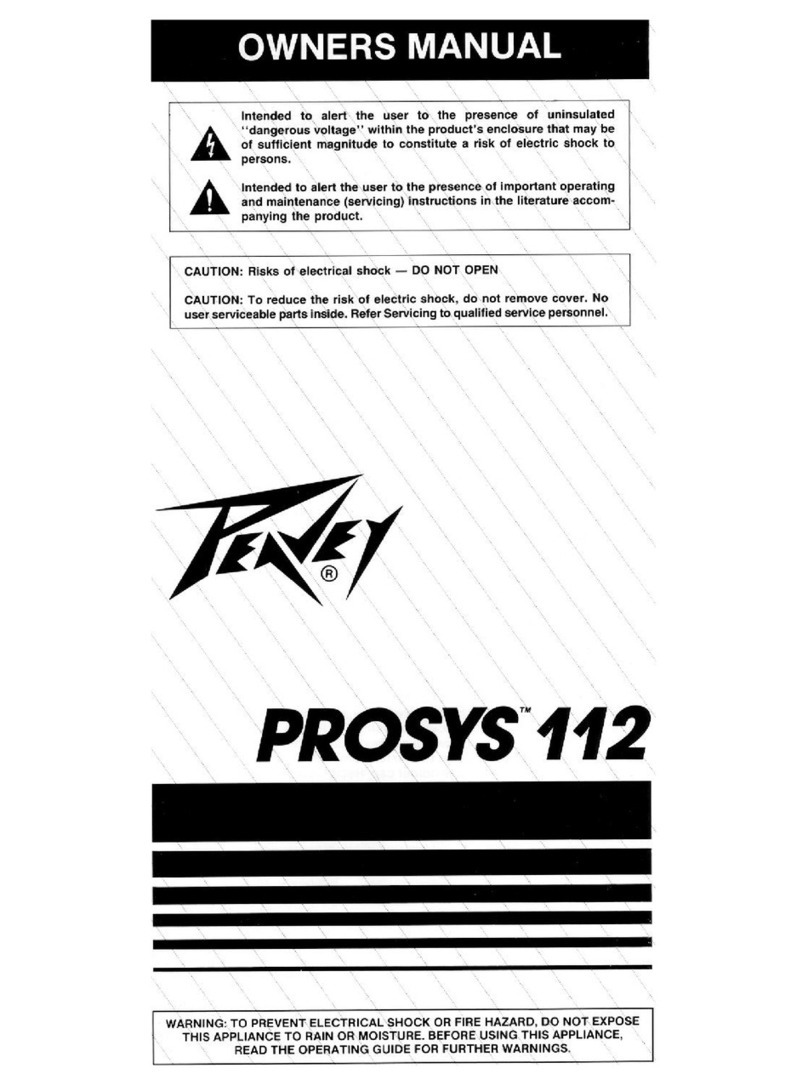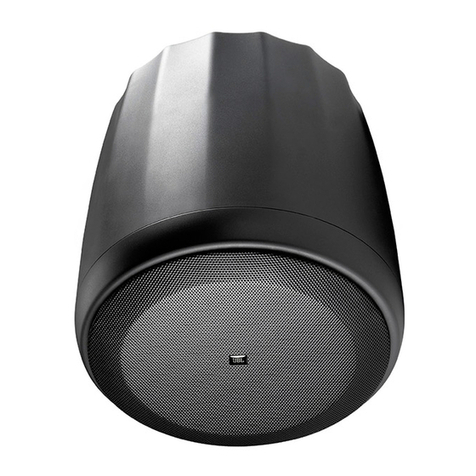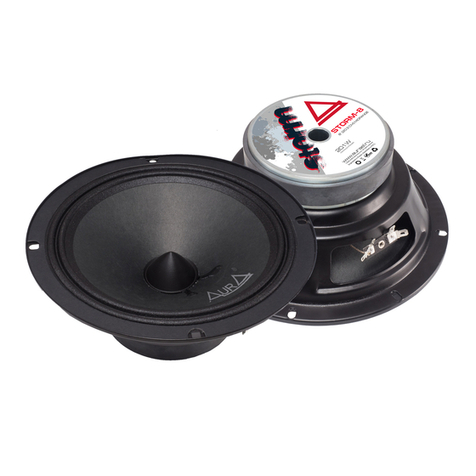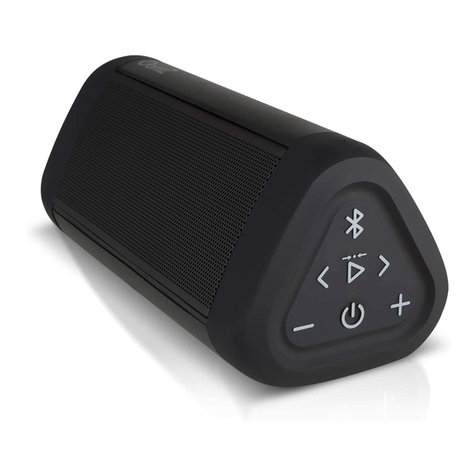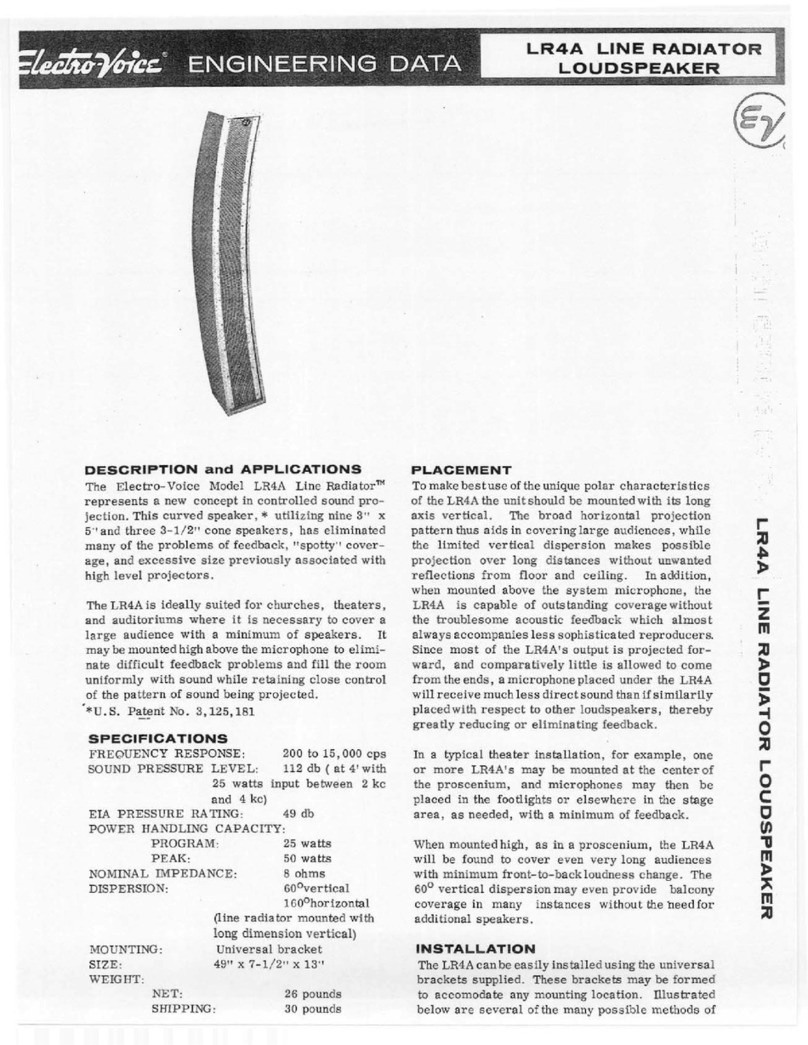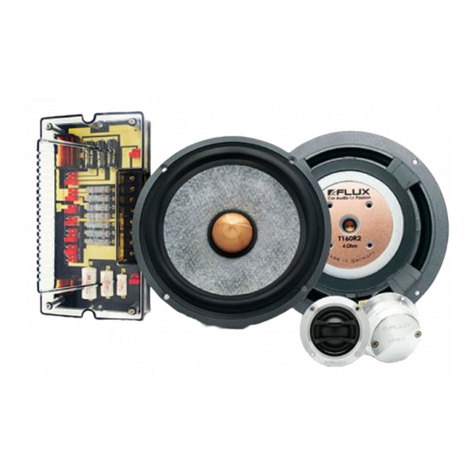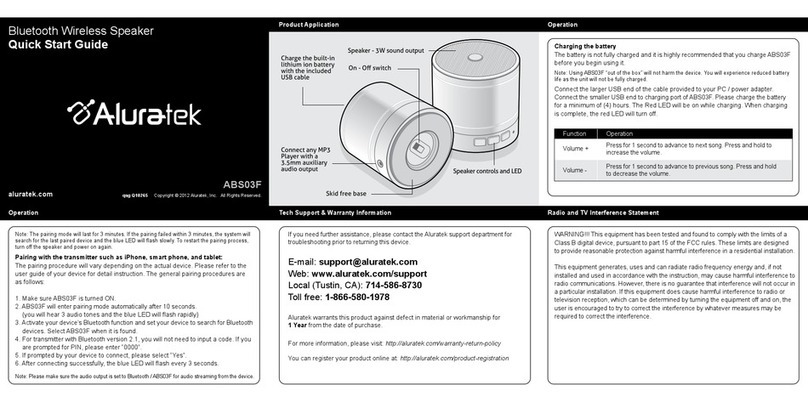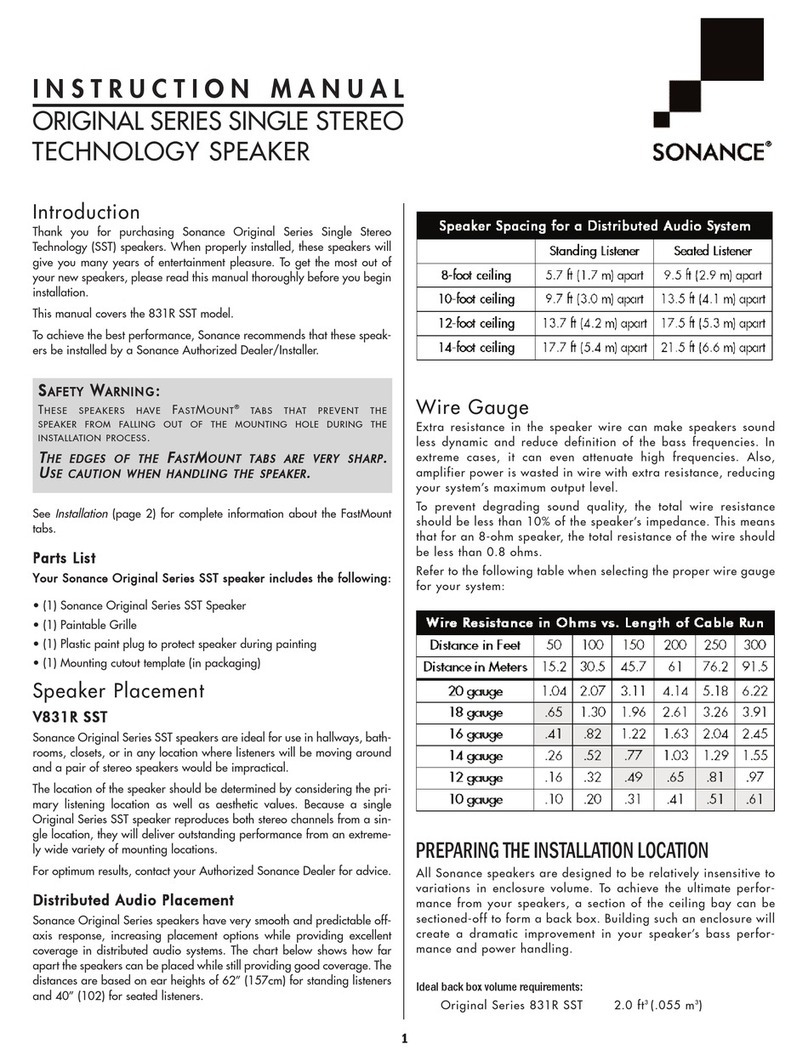
273 Branchport Ave.
Long Branch, N.J. 07740
(800) 631-2148
www.coopernotication.com
1
PN P85583A Copyright 2017 Cooper Wheelock, Inc. dba Cooper Notication
Use this product according to this instruction manual. Please keep this instruction manual for future reference.
GENERAL
The LSPK and LSPST3 Series High-Fidelity Multi-Candela Speaker Strobes are UL Listed under Standard 1971 for Signaling Devices for the
Hearing Impaired, UL Standard 1480 for Speaker Appliances and ULC Listed under Standard CAN/ULC-S541-07 and CAN/ULC-S526-16
for indoor Fire Protective Service. The Speaker Strobes with amber lens are UL Listed under Standard 1638 (Visual Signalling Appliance) for
Private Mode Emergency General Utility Signaling and ULC S526-16. Amber lens strobe appliances also comply with the polar distribution
requirements in the UL Standard 1971 for Indoor Fire Protection Service and NFPA-72 for Mass Notication Systems.
The LSPK and LSPST3 Series High-Fidelity Multi-Candela Speaker Strobes are designed for multiple power requirements with high dBA out-
put at each power tap. Series LSPK Speakers are UL Listed under UL Standard 1480 and ULC Listed under Standard CAN/ULC-S541-07
for Speaker Appliances. All models oer a choice of eld selectable taps, 1/8W to 2W, for either 25.0 VRMS or 70.0 VRMS audio systems. LSPK
and LSPST3 series speakers are UL rated to meet the NFPA 72 requirement for 520Hz signals in sleeping areas when used in conjunction
with Wheelock Safepath products (see SP40S manual for more details)
The design incorporates a high eciency speaker for maximum output at minimum power across a frequency range of 300-8000Hz. The
Speaker Strobes can provide non-synchronized strobe operation when connected directly to a Fire Alarm Control Panel (FACP), or provide
synchronized strobe operation when used in conjunction with a Dual Sync Module (DSM), or Wheelock’s Power Supplies. All models are Listed
for indoor use only with the backboxes specied in these instructions (see Mounting Options).
NOTE: All Canadian Installations should be in accordance with the Canadian Standard for the Installation of Fire Alarm Systems – CAN/
ULC-S524-07 and Canadian Electrical Code, Part 1. Final acceptance is subject to Authorities Having Jurisdiction.
WARNING: This appliance is a “FIRE ALARM DEVICE - DO NOT PAINT”
WARNING: Please read these instructions carefully. Failure to comply with any of the following instructions, cautions and warn-
ings could result in improper application, installation and/or operation of these products in an emergency situation, which could
result in property damage and serious injury or death to you and/or others.
The Wheelock Exceder LED3 Series meets NFPA 2016 20 millisecond light pulse duration code requirements. In addition, the Wheelock
Exceder LED3 product line has been UL/ULC listed as compatible with all Fire Alarm Control Panels (FACP) and accessories that have
been determined to be compatible with Wheelock model RSS Strobe based products including the RSS, CH, E, EH, ET,ST,HS,MT,S8, SA,
STH and Z Series. The maximum number of LED3 devices per NAC is determined by dividing the maximum current rating of the FACP
NAC divided by the total appropriate current rating for the selected candela output of the LED3 devices, with a maximum of 105 LED3
devices per NAC. Refer to FACP installation instructions for more detail. The Wheelock Exceder LED3 Series strobes may be installed in
the same notication zone and eld of view with any RSS Strobe based product.
SPECIFICATIONS
Table 1: UL/ULC Listed Speaker Models and Ratings
Model Voltage dBA at 10 Feet (Rated Watts)
Reverberant Per UL 1480
Anechoic dBA
Per CAN/ULC-S541-07
1/8 1/4 1/2 1 2 1/8 1/4 1/2 1 2
LSPK 25/70 75 79 82 85 87 75 79 82 85 87
LSPST3 25/70 75 79 82 85 87 75 79 82 85 87
NOTES
• Strobes will produce 1 ash per second over the “Regulated Voltage” range.
• All models are Listed for indoor use with a temperature range of +32ºF to +120ºF (0ºC to +49ºC) and maximum humidity of 93% RH.
The eect of shipping and storage temperatures shall not adversely aect the performance of the appliance when it is stored in the
original cartons and is not subjected to misuse or abuse.
• dBA is rated per UL Standard 1480 and ULC Standard ULC-S541-07 for Speaker Appliances. Frequency range of speakers is 300-
8000Hz.
• These appliances were tested to the operating voltage limits of 16-33 volts using Filtered (DC) or unltered Full-Wave-Rectied (FWR).
Do not apply 80% and 110% of these voltage values for system operation.
• Check the minimum and maximum output of the power supply and standby battery and subtract the voltage drop from the circuit wiring
resistance to determine the applied voltage to the strobes.
Table 2: Current Ratings for Strobe Only
Maximum RMS Current (AMPS)
LSPST3 and LSPST3-A
Voltage Range Regulated Voltage 15cd 30cd 75cd 110cd
DC 16-33VDC 24 0.030 0.040 0.100 0.195
FWR 16-33VRMS 24 0.040 0.056 0.133 0.257
NOTE: Candela setting will determine the current draw of the product.
Table 3: ULC Directional Characteristics
25/70V -3dB +/- 75 degrees horizontal; +/- 70 degrees vertical
-6dB +/- 90 degrees horizontal; +/- 90 degrees vertical
NOTE: The maximum wire impedance between strobes shall not exceed 35 OHMS.
CAUTION: Speaker Strobes are not designed to be used on coded systems in which the applied voltage is cycled on and o.
NOTE: Make sure that the total RMS current required by all appliances that are connected to the system’s primary and secondary power
sources, NAC Circuits , DSM Sync Modules or Cooper Wheelock Power Supplies do not exceed the power sources’ rated capacity or the
current ratings of any fuses on the circuits to which these appliances are wired.
WARNING: Overloading power sources or exceeding fuse ratings could result in loss of power and failure to alert occupants dur-
ing an emergency.
When calculating the total currents, use Table 2 to determine the highest value of “RMS Current” for an individual strobe (across the ex-
pected operating voltage range of the strobe), then multiply these values by the total number of strobes; be sure to add the currents for any
other appliances, including audible signaling appliances, powered by the same source and include any required safety factors.
If the peak current exceeds the power supplies’ peak capacity, the output voltage provided by the power supplies may drop below the listed
voltage range of the appliances connected to the supply and the voltage may not recover in some types of power supplies. For example, an
auxiliary power supply that lacks ltering at its output stage (either via lack of capacitance and/or lack of battery backup across the output)
may exhibit this characteristic.
WIRING INFORMATION
A 1.5µF blocking capacitor for DC supervision of audio lines by the FACP is factory wired in series with the speaker input. Supervision volt-
age must not exceed 33 volts DC.
1. LSPST3 Speaker Strobe models have in-out wiring terminals that accept two #12 to #18 American Wire Gauge (AWG) wires at each
screw terminal. Strip leads 3/8 inches and connect to screw terminals.
2. Break all in-out wire runs on supervised circuits to assure integrity of circuit supervision as shown in Figure 2. The polarity shown in the
wiring diagrams is for operation of the appliances.
3. Connect speaker wires to common and positive of terminal block and select the power tap terminal for 1/8W, 1/4W, 1/2W, 1W or 2W;
25V or 70V as required (see Figures 1, 2, 3,4 and Table 4). Each doubling of rated Watts increases sound output by 3 dBA.
4. Using the slide switch shown in Figure 3, select voltage and wattage as shown in Table 4 below.Each letter corresponds to a position of the
switch located on the printed circuit board.
Refer to Sync Module instruction sheets DSM (P83177) or Wheelock Power Supplies for additional information.
CAUTION: The following gures show the maximum number of eld wires (conductors) that can enter the backbox used with each mounting option. If these
limits are exceeded, there may be insucient space in the backbox to accommodate the eld wires and stresses from the wires could damage the product.
Figure 1: Strobe Wiring Figure 2: Wire Connection
Install signaling appliance to backbox using mounting screws provided.
NOTE: Check electrical ratings specied in Tables 1 and 2 (as appropriate) to ensure proper electrical input. Ensure the speaker wiring is
connected to speaker terminals only, and strobe wiring is connected to strobe terminals only. Ensure the wiring at the FACP is correct.
NOTE: Wiring method shall be in accordance with CSA C22.1, Canadian Electrical Code, Part 1, Safety Standard for Electrical Installations,
Section 32.
WARNING: Improper electrical input can damage the product or cause it to malfunction.
NOTE: The speaker strobe appliances must be set to the desired dBA sound output level before they are installed. This is done by properly
setting the slide switch in accordance with these instructions.
WARNING: Incorrect settings will result in improper performance. Factory setting is F: 70V @ 1/2 W.
NOTE: Slide the Switch Indicator selection switch to the desired tap setting.
NOTE: The LSPST3 comes pre-set at 15cd.
INSTALLATION INSTRUCTIONS
WHEELOCK EXCEDER LED3 WALL MOUNT HIGH
FIDELITY SPEAKER AND SPEAKER STROBES
(AMBER AND CLEAR LENS
